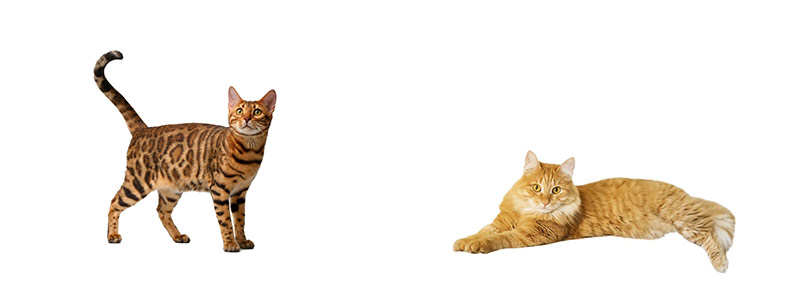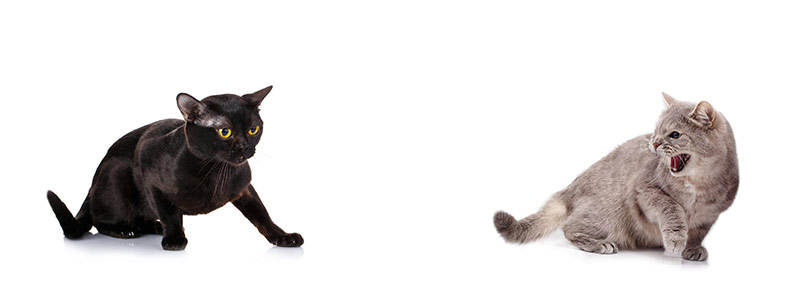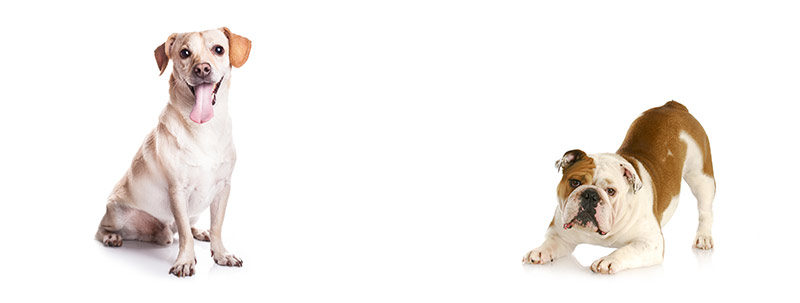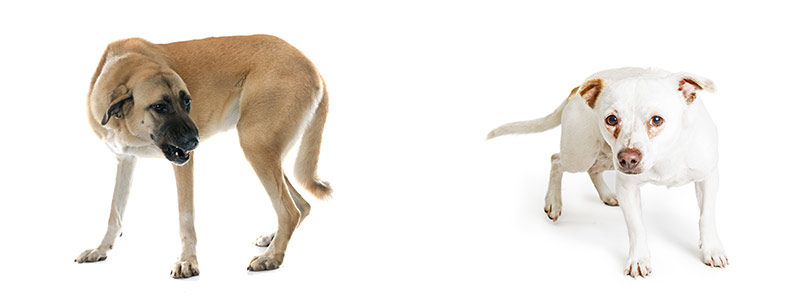Body Language
Our patients give important signals of their comfort or distress by their body language and vocalizations. It is essential that you learn how to assess your patient and plan your approach for the safety of handlers and the pet.
The most basic way to divide patients is into those that are apparently relaxed and therefore “safe” to approach, and those that are aroused, fearful, or aggressive, and therefore “not safe” to handle. Keep in mind that all approaches at handling should minimize the patient’s discomfort or anxiety, and that you should always be ready to adjust as the interaction proceeds. Any perceived threat, such as a loud noise or rapid movement, can change the animal’s behavior.
Feline
Safe to approach
Behaviors that indicate that a cat is safe to approach include relaxed body postures and exploring the environment curiously. The cat may gently head-butt or rub its cheek on people or other items in the room. Its eyes appear alert, but not staring, with pupils appropriate to room light. Some cats may gently blink their eyes when comfortable. Its ears respond to sound, usually moving gently. The tail is relaxed, usually extended caudally and slightly downward with minimal flicking back and forth. Some cats raise their tail upright in greeting and may give a soft chirrup when approaching. They may occasionally roll on their side exposing their belly, but this is not an invitation to pet their abdomen.

Not safe to handle
Cats may show some degree of fear in the veterinary clinic, usually exhibiting freeze, flight, or fight. A cat that is crouched with its head down and immobile is showing fearful behavior. Some cats may exhibit displacement behavior, such as grooming itself, when they are in an anxiety-producing situation. Other reactions are if the cat jumps away, runs under a chair, or attempts to find a place to hide. Cats can be aggressive in a heightened response to a fear-inducing stimulus, such as hissing and vocalizing as handlers reach for it in a carrier. Other signs that a cat might not be safe to handle are dilated or partially dilated pupils, ears held to the side or back, holding a crouched position, or flicking its tail.

Canine
Safe to approach
The dog that is safe to approach has relaxed muscles, playful movements such as the bow, a neutral tail or a loose tail wag, or ears that are held neutrally and responding gently to sounds. The dog’s eyes have a pupil size appropriate for ambient light, the eyelids are open but not held tight, and the dog looks around at people and objects. The mouth-lips will be relaxed and the tongue may hang out loosely.

Not safe to handle
Behaviors that indicate anxiety include a crouched posture with a tucked tail and sometimes a front paw slightly raised. Anxious dogs may duck their head down and roll their eyes sideways to view the handlers. Their pupils may start to dilate and the dog may yawn or lick its lips. Panting becomes faster and lip commissures retract caudally. The stressed dog often tenses the ears, retracting either medially or caudally. Muscles become tense, and the dog may stand stiffly or make sudden, intense attempts to escape, often moving under the client’s chair or legs. Urine or anal sac material may be expelled. Attempts to bite may be without warning.
Dogs that exhibit threatening behaviors often stare directly at the handler with dilated pupils, tense ears that are pulled forward, and a tail that is held high with a slow, flagging movement. The maxillary lips are retracted vertically and low growls or snarls may be heard.
